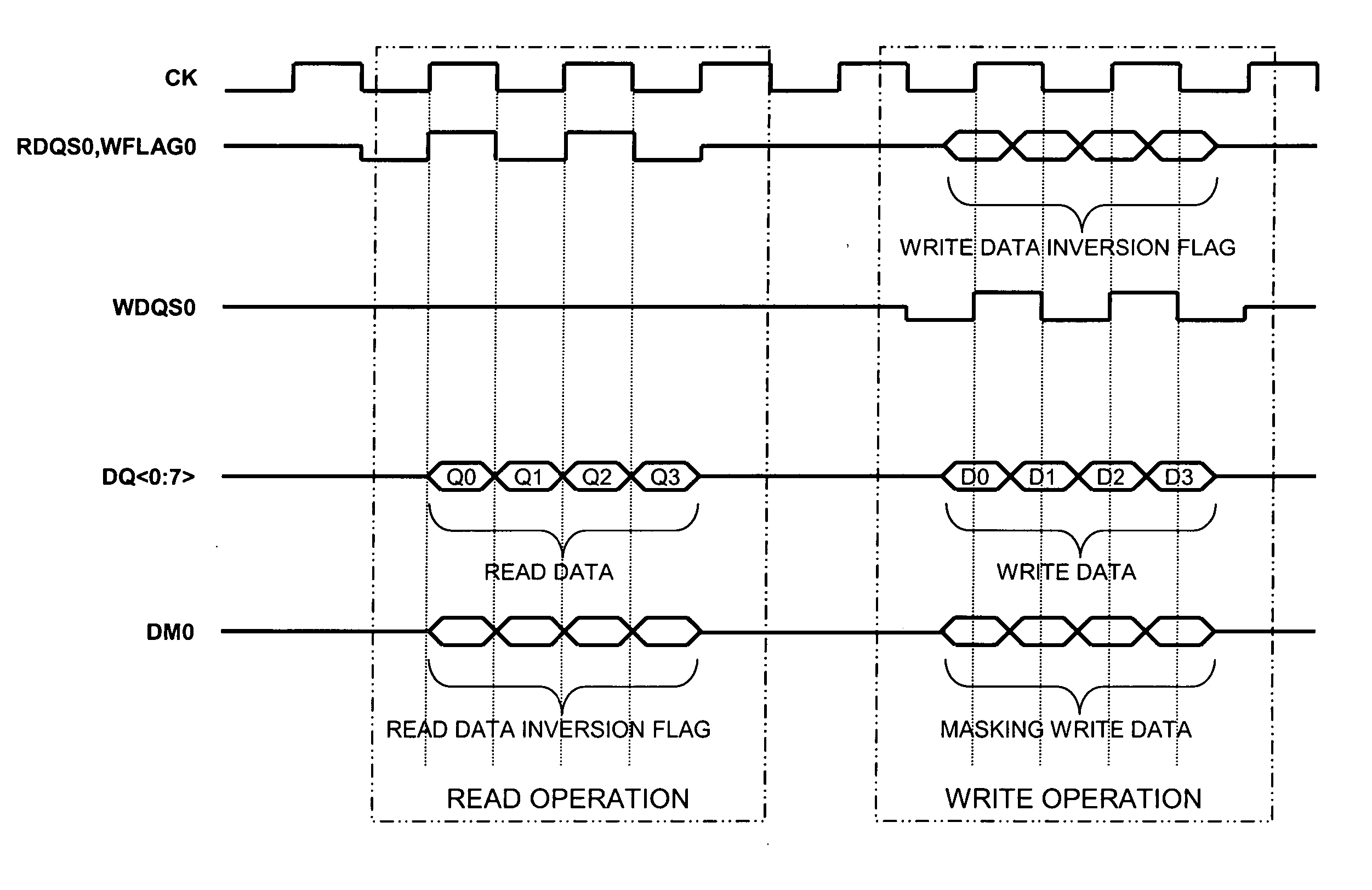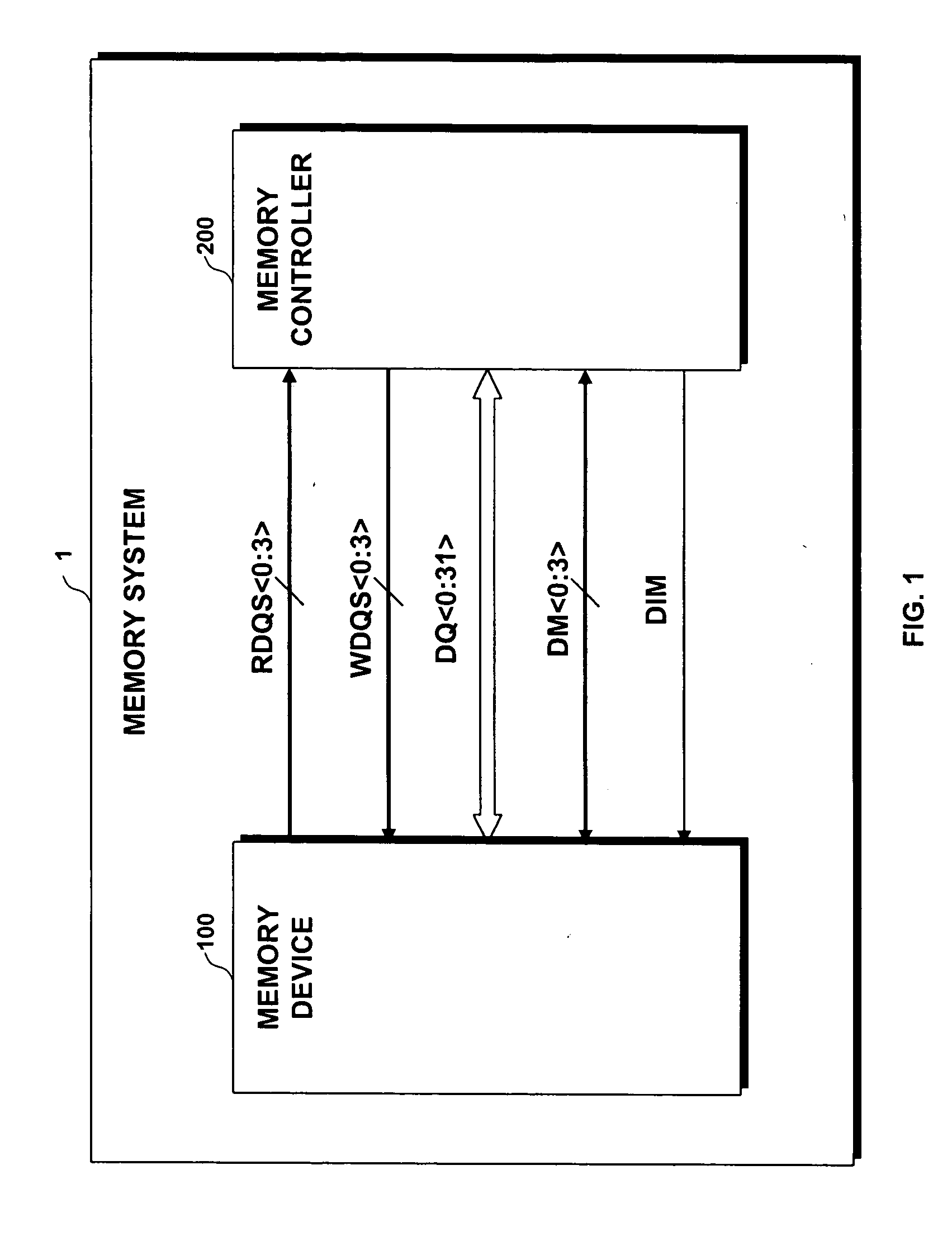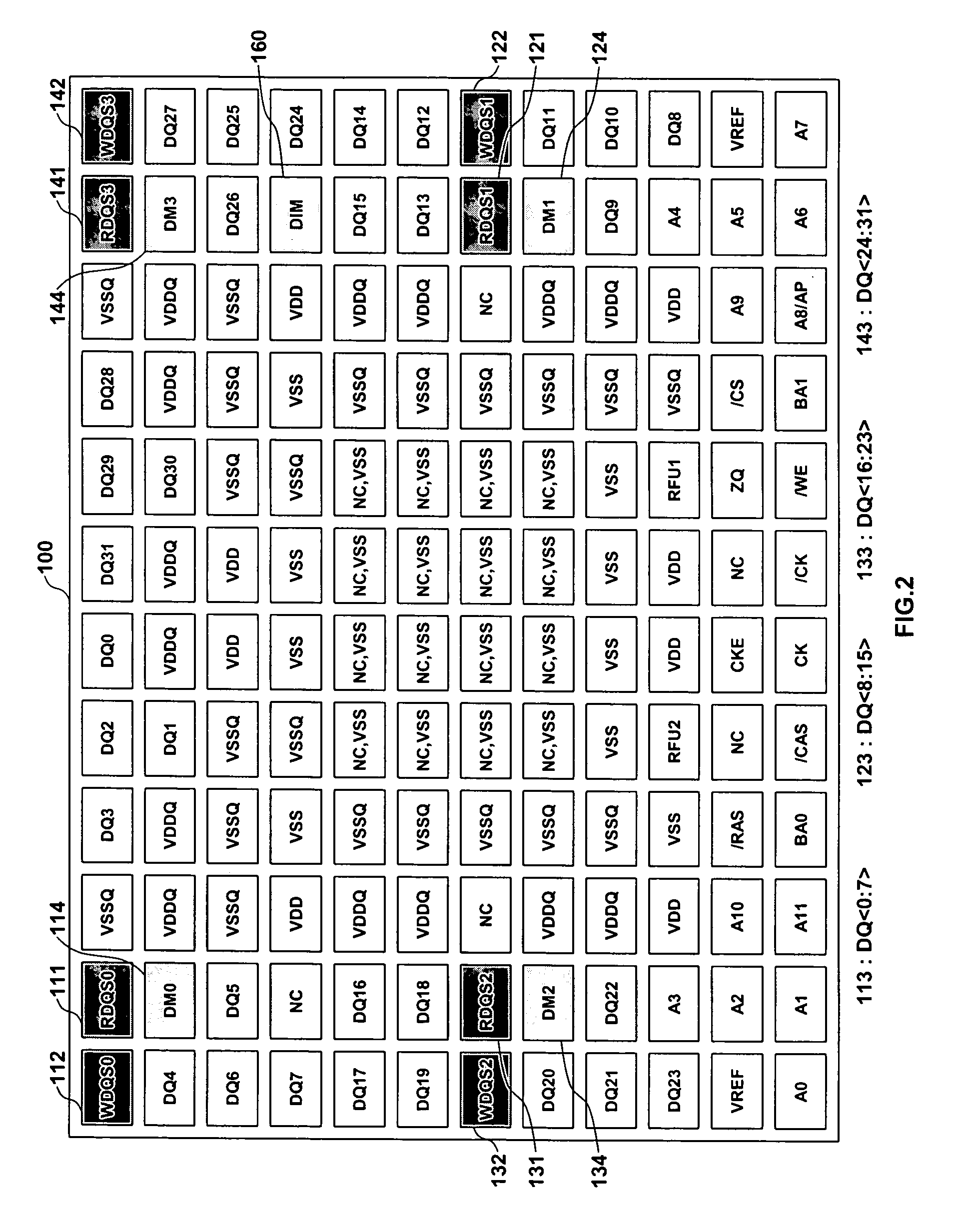Memory system having data inversion and data inversion method for a memory system
a memory system and data inversion technology, applied in the field of memory systems, can solve the problems of increasing the pin overhead of the memory device, unable to selectively apply data inversion to individual bytes during a data write operation, and unable to achieve data write operation selectively
- Summary
- Abstract
- Description
- Claims
- Application Information
AI Technical Summary
Benefits of technology
Problems solved by technology
Method used
Image
Examples
Embodiment Construction
[0039]FIG. 9 shows one embodiment of a memory system 2 operating with data inversion. The memory system 2 includes a memory device 500 and a memory controller 600. In clear distinction from the memory system 1 of FIG. 1, the memory system 2 does not include any DIM signal between the memory controller 400 and the memory device 300.
[0040]FIG. 10 shows an exemplary ball (or pin) configuration of the memory device 300. As can be seen from FIG. 10, the balls (or pins) of the memory device 500 similar to those for the memory device 100 shown in FIG. 2, except that the memory device 500 does not include the DIM pin 160, and instead has an extra unused (NC) pin 360. Also, the balls / pins 311, 321, 331 and 341 in FIG. 10 are named RDQS,WFLAG, and the balls / pins 312, 322, 332 and 342 in FIG. 10 are named WDQS,RFLAG, as will be explained in greater detail below.
[0041]FIG. 11 shows a data processing block diagram of one embodiment of the memory device 300. The memory device 300 includes data ...
PUM
 Login to View More
Login to View More Abstract
Description
Claims
Application Information
 Login to View More
Login to View More - Generate Ideas
- Intellectual Property
- Life Sciences
- Materials
- Tech Scout
- Unparalleled Data Quality
- Higher Quality Content
- 60% Fewer Hallucinations
Browse by: Latest US Patents, China's latest patents, Technical Efficacy Thesaurus, Application Domain, Technology Topic, Popular Technical Reports.
© 2025 PatSnap. All rights reserved.Legal|Privacy policy|Modern Slavery Act Transparency Statement|Sitemap|About US| Contact US: help@patsnap.com



